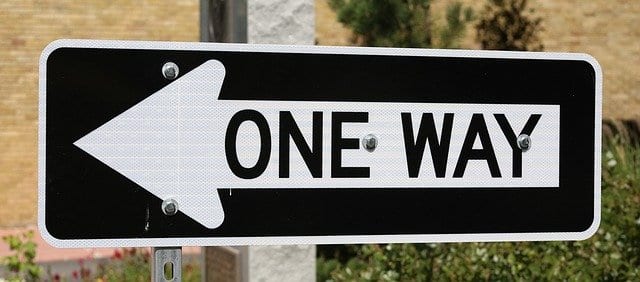Moving from “either/or” to “both/and” thinking is a significant shift in development. It is fundamental to thinking more comprehensively and building a conflict management mindset.
When we think comprehensively, we create the space for possibility, new ideas and for the other. Holding that space requires the capacity to agree to everything – which is not the same as agreeing with everything!
Can you suspend judgement and appreciate the perspectives you disagree with?
Conflict management requires seeing both sides
A conflict management mindset requires seeing both sides of an issue or a conflict. Once you have seen both sides, you will not be able to unsee them.
Many of the conflicts encountered in organisations arise from one-sided thinking. From being blind to interdependencies.
For example, if there were no controls, would there be empowerment? If there was no structure, would agility be a thing? Can laws exist without hierarchy? To paraphrase Jim Collins – can we stimulate progress without preserving the core? In the context of a pandemic, can social activity be separated from public health?
Managing polarities
These are interdependent pairs (polarities) because one creates the other. And it is through appreciating the natural conflict between these pairs that the tension between them can become a creative force rather than a destructive one.
We move from being destructive to being creative by recognising that the conflict existing between the pair is not solvable. The interdependency can only be navigated over time. Stepping successfully into this space requires a conflict management mindset.
We are likely to make destructive choices when we attach too strongly to one side of a pair and ignore the interdependency. This might be called simplistic thinking. It happens when our preferences own us rather than us owning our preferences. And without self-awareness this will happen without our noticing.
Conflict management and the yo-yo
Have you noticed yourself going from crisis to crisis? In a pandemic, we have seen how social proximity causes hospitals to fill up. We have seen that swinging from one side to the other wastes resources, brings leadership competence in to question and is exhausting for all concerned.
To address this yo-yoing from one side of a pair to the other, we must find what Richard Rohr terms the third way. This is a way forward that overcomes the contradictions presented by both sides of an interdependent pair, that is bigger than each any excludes neither.
It is the capacity to navigate paradox and contradiction than to merely suffer paradox and contradiction that defines the conflict management mindset. It is a key strategic capacity, perhaps the definition of a strategic mind.
Read about managing board conflict.

Share this on...